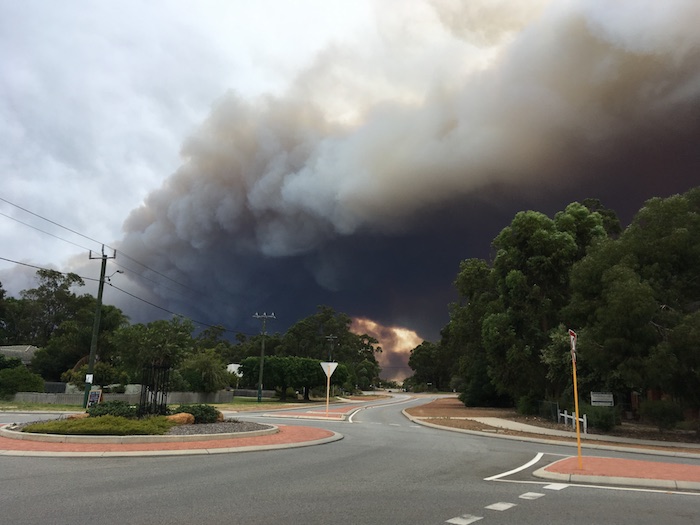It’s another summer again and once again we have almost daily TV accounts of an urban blaze somewhere around Perth in some pocket of urban bush or local bush reserve that goes up in flames. Such bushfires are a real threat to homes, mainly from ember attack, and the smoke causes distress to people with some health problems.
The bush is burnt under the worst possible conditions of high intensity, when the vegetation is under high water stress, so that the damage to the vegetation is severe. Trees are often killed, any wildlife is killed or driven away and ground habitat, such as logs, are burnt away. The tree canopy is destroyed allowing weeds to invade. A bushfire like this sets the area on the path to long-term decline, to end up as an ugly, derelict area.
It’s all great theatre – flames overtopping the trees, billowing black smoke, and anxious householders wielding garden hoses. Firies descend on the scene and do their thing and best of all, there’s choppers waterbombing everything. Using the choppers is a very expensive operation. Since there is rarely the possibility of the fire escaping into other areas, it’s a case of massive overkill.
This should never happen. And it doesn’t need to happen.
Most, if not all, of these bush areas are vested in the relevant Shire Council. It is therefore the responsibility of the Council to manage these areas, including their fire management. The Bush Fires Act is quite explicit about this. The problem is, many Councils do not fulfil their legal obligations.
It is crucial that urban residents that live alongside such bush blocks accept that any bush in Australia requires active fire management, which involves ongoing control of fuel loads.
These pockets of bush are usually surrounded by roads, so it is easy, by periodic prescribed burning under mild weather conditions, to entirely remove the risk of summer bushfires. Burned in this way every few years, or better still, burned in patches so that there is a mix of fuel ages, will mean that if a bushfire does start again, it will be of low intensity and easily controlled by the firies, without the need for waterbombers.
OK, so the prescribed burns will generate some smoke, but the amount is much less than that generated by a summer bushfire. A burn under mild weather conditions in winter or early spring, and in fuel that is no more than about 5 years old, will not damage the tree canopy and logs do not burn away. The burn recycles essential nutrients that keep the vegetation in good health and stimulates the germination of many native plants. Usually within 2 years of a mild-intensity burn, the impacts have disappeared.
How to get it done? Well, for a start, householders need to recognise that they need to do something about it, and get together to put pressure on their council to address their problem. Councils do have maintenance crews who could do the job, if their work priorities are changed to take on this task. There are also now experienced fire management contractors who can plan and oversee a fuel reduction burn, that councils could employ. Even Friends of groups could be trained for this, and DFES could provide the necessary training.
In a very real way, the participation in fire management of their own local area would enable urban people to connect with the real Australia, as managed by aboriginal people for many thousands of years.
